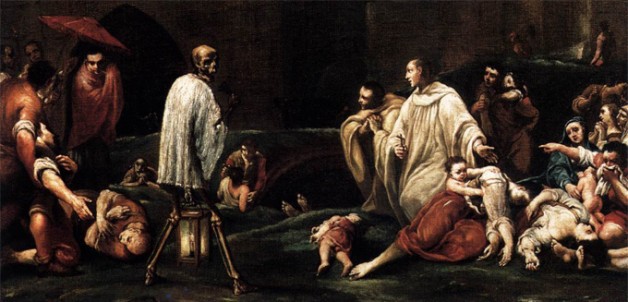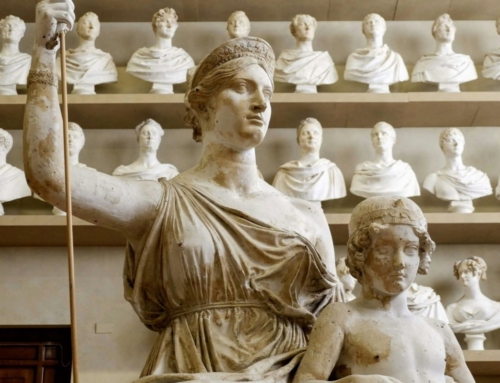[The second beast] forced all the people, small and great, rich and poor, free and slave, to be given a stamped image on their right hands or their foreheads, so that no one could buy or sell except one who had the stamped image of the beast’s name or the number that stood for its name.
—Revelation 13:16-17
This is of course the famous “Mark of the Beast” passage. Just as God in the vision marks his elect with his seal, so the beast, mocking God, marks his followers with a mark of his own. Many people are deceived in their speculations about what this might be because they are looking for something bodily and temporal, whereas the images of the Book of Revelation chiefly serve to make spiritual realities visible.
This is in accord with St. Thomas Aquinas’ interpretation of marks or ‘characters’:
A character distinguishes one from another, in relation to some particular end, to which he who receives the character is ordained: as has been stated concerning the military character by which a soldier of the king is distinguished from the enemy’s soldier in relation to the battle. In like manner the character of the faithful is that by which the faithful of Christ are distinguished from the servants of the devil, either in relation to eternal life, or in relation to the worship of the Church that now is. Of these the former is the result of charity and grace; while the latter results from the sacramental character. Wherefore the “character of the beast” may be understood by opposition, to mean either the obstinate malice for which some are assigned to eternal punishment, or the profession of an unlawful form of worship.
Chapter 14—The 144,000 Virgins in Heaven
In contrast to those who accept the mark of the beast are the 144,000 sealed by God, a number that represents all of God’s elect, as we saw earlier. Here the symbolic number appears again, and they are men who are “virgins,” “not defiled with women.” Even though St. Bede devotes considerable space in his commentary indicating that this shows how honorable virginity for the sake of the kingdom of heaven is, he says that the virgins in this vision represent not the celibate only but the whole Church, whom St. Paul says is the virgin bride of Christ (II Corinthians 11:2). Therefore we should acknowledge that the virginity, just like the number, is symbolic of spiritual realities. If being married shut us out of heaven, the Church and the world would look rather different. Here especially we should remember what we learned about the symbolic force of chastity and harlotry in prophetic visions.
Chapter 16—The Seven Bowls of Wrath
I heard a loud voice speaking from the temple to the seven angels, “Go and pour out the seven bowls of God’s fury upon the earth.” The first angel went and poured out his bowl on the earth. Festering and ugly sores broke out on those who had the mark of the beast or worshiped its image.
—Revelation 16:1-2
Notice that the plagues only afflict those who accepted the mark of the beast. It is perfectly within God’s power to make bodily plagues selectively afflict some people and not others, as he did in Egypt in the Exodus; but we should always remember that the Old Testament events of salvation history are bodily prefigurements of the spiritual realities of the New Testament (see I Cor 10). When we consider that sin only has power over those who consent to it, it becomes apparent that these plagues must be chiefly spiritual realities, signifying the destruction that sin wreaks in the life of the unrepentant sinner.
Image: Giuseppe Maria Crespi, The Blessed Bernardo Tolomeo’s Intercession for the End of the Plague in Siena







